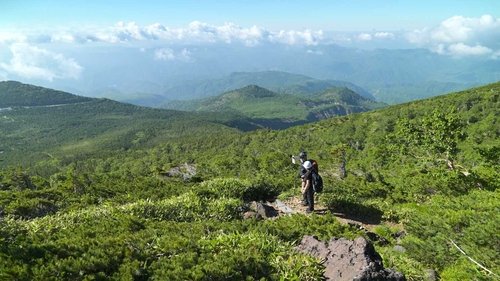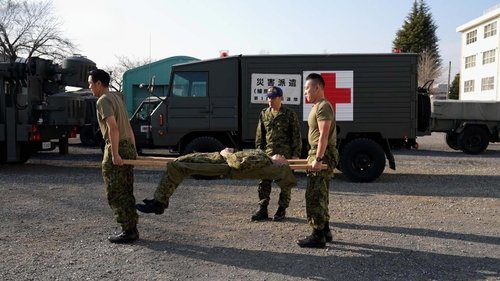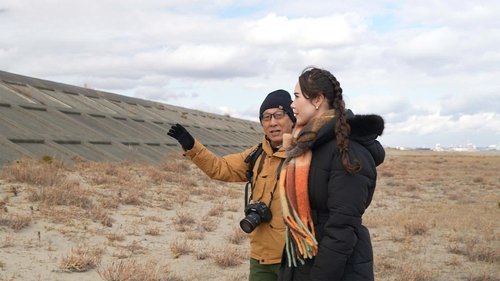

All Episodes of BOSAI: Science that Can Save Your Life
Browse all episodes of BOSAI: Science that Can Save Your Life

All Episodes of BOSAI: Science that Can Save Your Life
Browse all episodes of BOSAI: Science that Can Save Your Life
Season 1
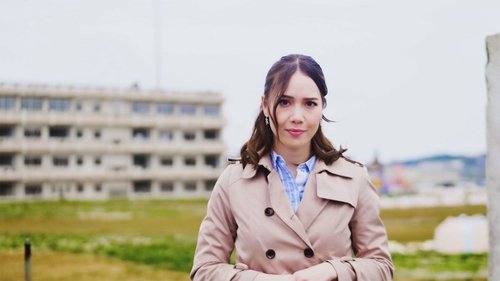 N/A/100 votes
N/A/100 votesTsunami
Season 1 Episode 1 - Aired 5/1/2020
Japan has a long history of natural disasters. BOSAI explores how to overcome them and save lives with the power of science. This first program is about tsunami. First, we visit ruins in Miyagi Prefecture from the 2011 Great East Japan Earthquake, and learn how the psychological state of "normalcy bias" affects humans in a disaster. We also look at the characteristics of a tsunami, and new initiatives created with the aid of a supercomputer to help with evacuation drills and other countermeasures.
Director: Kiichiro Kimura
Writer: Unknown
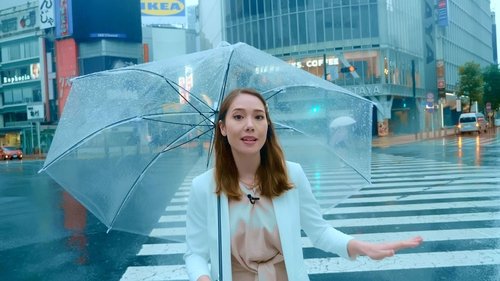 N/A/100 votes
N/A/100 votesUrban Flooding
Season 1 Episode 2 - Aired 9/5/2020
Japan's cities are often located in low-lying areas along rivers and are paved with concrete and asphalt, putting them at risk of flooding in the event of heavy rain. In recent years, significant damage has been caused by overflowing drains and backflow along drainage channels. In this program, we'll look at the unique mechanisms of urban flooding and explore ways to protect against disaster.
Director: Kiichiro Kimura
Writer: Unknown
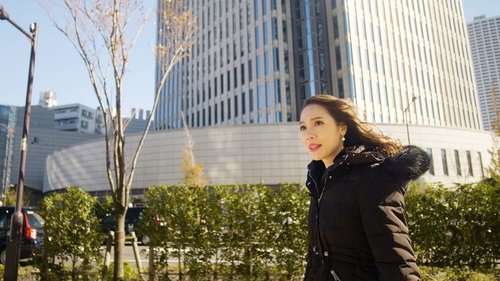 N/A/100 votes
N/A/100 votesUrban Windstorms
Season 1 Episode 3 - Aired 1/11/2021
Typhoon Jebi, which struck Osaka Prefecture in 2018, is said to be the first typhoon to have hit a modern metropolis in Japan, and many buildings were damaged. According to experts, the destruction of those buildings could not be explained by the maximum instantaneous wind speed observed by the Japan Meteorological Agency. Urban structures may be to blame. Researchers believe that eddies of wind intensify around high buildings, causing sudden gusts of strong winds that exceed the observed values. In this episode, we will scientifically analyze the mechanism of sudden urban windstorms and explore ways to save lives.
Director: Kiichiro Kimura
Writer: Unknown
 N/A/100 votes
N/A/100 votesLong-period Ground Motion and A New Threat
Season 1 Episode 4 - Aired 1/31/2021
In the 2011 Great East Japan Earthquake, high-rise buildings in Tokyo's Shinjuku district, some 400 kilometers away from the epicenter, continued to sway significantly for 13 minutes. This is thought to have occurred when the high-rise buildings experienced resonance from the earthquake's "long-period seismic motion." Furthermore, in the 2016 Kumamoto earthquakes, a type of motion called a "long-period pulse" was recorded for the first time in Japan, presenting a new challenge for earthquake countermeasures. In addition to examining these types of earthquake motion, we'll also look at the effects of earthquakes on buildings and explore ways to save lives.
Director: Akihito Sawai
Writer: Unknown
 N/A/100 votes
N/A/100 votesLocalized Torrential Rain
Season 1 Episode 5 - Aired 6/19/2021
Localized torrential rain is occurring with greater frequency in Japan. Flash floods from the heavy rain not only cause rivers to overflow but threaten homes and human life. This kind of weather has been difficult to predict, given the short timeframe between the formation of cumulonimbus clouds and the onset of rain. Yet a new type of radar called "phased-array radar" and a simulation using a Japanese supercomputer have been developed to forecast local downpours 10 minutes in advance. In this episode, we'll take a closer look at how the latest technology is being used to forecast localized torrential rain and protect lives.
Director: Takeshi Kawamoto
Writer: Unknown
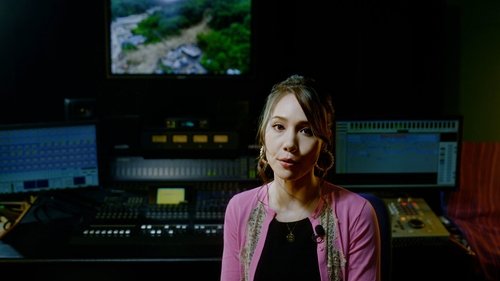 N/A/100 votes
N/A/100 votesDebris Flows
Season 1 Episode 6 - Aired 7/10/2021
An increase in heavy rainfall in recent years has made debris flows a frequent problem in Japan. We'll look at research underway to help with their early detection and explore ways to protect lives.In recent years, debris flows have become more frequent in Japan due to an increase in heavy rainfall. Given that about 70% of Japan's land area is covered by mountains and forests, they have become a significant issue. After large-scale debris flows struck parts of Hiroshima Prefecture in 2014 and 2018, scientists found that debris flows tend to start out small and then repeatedly recur, causing significant damage. Research is now underway to determine the locations where debris flows are likely to occur based on topographical and geological data, and install sensors that can detect the very first debris flow. Information from these sensors can then help residents evacuate as quickly as possible. In this program, we'll introduce the latest research to save lives from debris flows.
Director: Kiichiro Kimura
Writer: Unknown
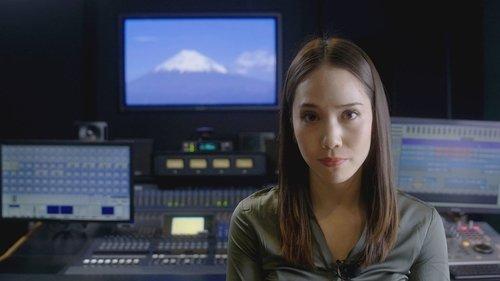 N/A/100 votes
N/A/100 votesMt. Fuji's Threat to Tokyo
Season 1 Episode 7 - Aired 7/17/2021
Mt. Fuji has been an object of faith for many Japanese. On the other hand, it has also caused numerous disasters with repeated eruptions. According to a simulation released by the Japanese government in March 2021, the next eruption could cause up to 10cm of volcanic ash to accumulate in Tokyo, about 100km away, within a few hours. Volcanic ash contains small jagged pieces of volcanic glass that can cause severe eye pain. Furthermore, volcanic ash can become electrically conductive when it absorbs rain, damaging power grids and triggering power outages. Moreover, it is expected to cripple the transport system, including automobiles, trains and airplanes, leading to significant damage in the urban areas. What can we do to prepare for the eruption of Mt. Fuji? Find out the things you can do in your daily life to protect yourself from volcanic disasters.
Director: Takeshi Kawamoto
Writer: Unknown
 N/A/100 votes
N/A/100 votesHeatstroke
Season 1 Episode 8 - Aired 8/28/2021
In Japan, the temperature is continuing to rise due to the effects of global warming and heatstroke cases are also on the rise. Heatstroke is a condition in which the body loses the ability to regulate its own temperature in a hot humid environment. It causes nausea, dizziness, delirium and could even lead to death. Professor Akimasa Hirata of Nagoya Institute of Technology developed a way to simulate the core body temperature using computer models of the human body. His research is helping to predict the risk of heatstroke. Furthermore, another research is underway that combines this technology with urban climate simulations. Discover ways to protect yourself from heatstroke through the latest research.
Director: Akihito Sawai
Writer: Unknown
 N/A/100 votes
N/A/100 votesHome Flooding
Season 1 Episode 9 - Aired 11/6/2021
The 2018 torrential rains in western Japan killed 51 people in the Kurashiki City town of Mabi in Okayama Prefecture. Many of the victims drowned on the first floor of their home despite having a second story available. Why weren't they able to evacuate? A simulation of the flooding revealed that flood waters rose at a much faster rate than initially expected, highlighting the importance of early evacuation during heavy rain and flooding. Meanwhile, home builders have been developing completely new houses that prevent damage from flooding. In this program, we'll take a closer look at the threat of home flooding as well as some of the latest countermeasures.
Director: Junya Fukui
Writer: Unknown
 N/A/100 votes
N/A/100 votesTornadoes
Season 1 Episode 10 - Aired 11/13/2021
Japan experiences an average of 23 tornadoes per year. They often cause serious damage when they strike in populated areas such as plains or along the sea. Tornadoes are also considered the most difficult type of weather phenomenon to predict, with few effective countermeasures available. Now, research is underway to capture the process of tornado formation using the latest radar, and to predict tornadoes using data from ground-based observation equipment. We'll take a closer look at the latest developments in tornado research and new efforts underway to protect lives.
Director: Kiichiro Kimura
Writer: Unknown
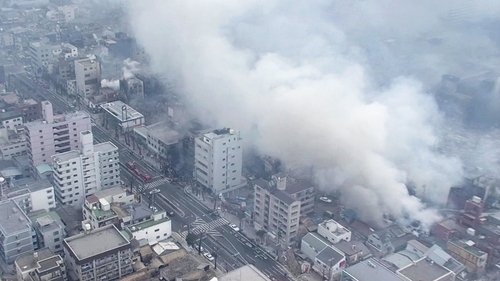 N/A/100 votes
N/A/100 votesPost-earthquake Fire
Season 1 Episode 11 - Aired 12/4/2021
In 1995, the Great Hanshin-Awaji Earthquake struck Japan's Hyogo Prefecture early in the morning. Immediately after the earthquake, multiple fires broke out at the same time. Those who could not escape the fires lost their lives, and a total of 6,434 people died in the disaster. According to one investigation, 2 out of 3 people noticed the fires but did not evacuate immediately. Why was this? Reasons included delayed evacuation, an inability to evacuate and evacuation confusion. Now, the latest research is helping us understand the unexpected difficulties in trying to escape from a city hit by post-earthquake fires. In this program, we'll explore what is necessary to save lives.
Director: Akihito Sawai
Writer: Unknown
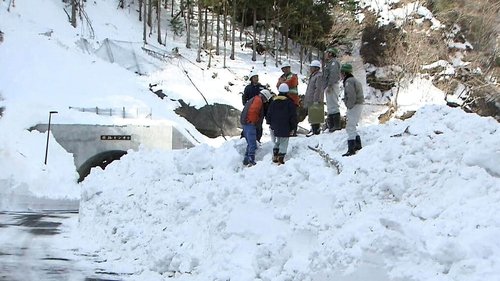 N/A/100 votes
N/A/100 votesAvalanches
Season 1 Episode 12 - Aired 1/15/2022
Avalanches occur suddenly, damaging houses and injuring people. Many of the avalanches that occurred in Yamanashi Prefecture in 2014 took place in locations where avalanches are uncommon. We now know that many of these were "slab avalanches," in which a slab of surface layer snow is dislodged. How and why did these slab avalanches occur? We'll look at the latest efforts to better understand the underlying mechanisms, and the steps being taken to save lives.
Director: Kenichi Tsusaka
Writer: Unknown
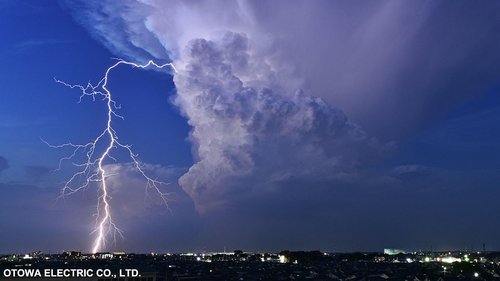 N/A/100 votes
N/A/100 votesLightning
Season 1 Episode 13 - Aired 2/5/2022
As a natural threat that can suddenly occur any time of the year at nearly any place around the world, lightning is formidable. Despite humanity's long history with lightning, there's still a surprising amount of misinformation about what to do during a thunderstorm. In this episode, leading Japanese experts on lightning will help us sort the facts from the myths, and show us new 3D imaging techniques that can trace the exact path taken by a lightning strike, which is expected to improve our predictions of when and where lightning will strike.
Director: Takeshi Kawamoto
Writer: Unknown
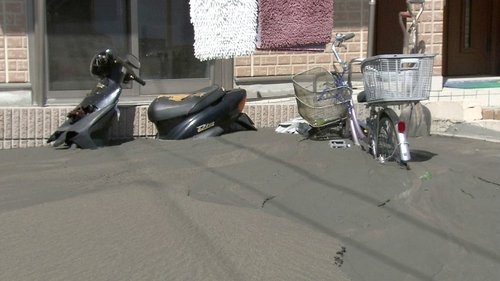 N/A/100 votes
N/A/100 votesSoil Liquefaction
Season 1 Episode 14 - Aired 2/12/2022
The Great East Japan Earthquake of 2011 caused unprecedented damage. Even areas 300 kilometers away from the epicenter suffered damages beyond what was predicted. A phenomenon called soil liquefaction occurred over a large area. Some 27,000 structures sank or tilted, causing massive damage. The city of Urayasu in Chiba Prefecture was particularly affected. Surveys later revealed that the city had all the criteria for liquefaction to occur. The key was groundwater depth. Find out the mechanism of liquefaction and the latest mitigation technology.
Director: Junya Fukui
Writer: Unknown
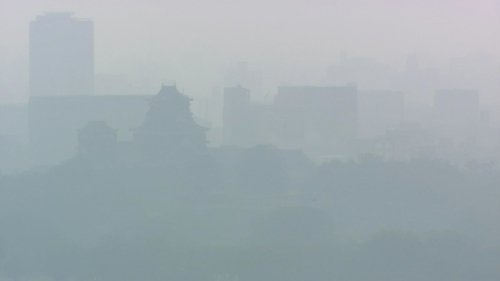 N/A/100 votes
N/A/100 votesPM2.5
Season 1 Episode 15 - Aired 3/5/2022
PM2.5 are extremely small particles. The WHO estimates that every year PM2.5 is responsible for 2.4 million premature deaths worldwide. What is the cause? According to a study conducted by Kyoto University, PM2.5, which enters the body through the respiratory organs, can damage cells and cause inflammation, worsening various diseases. It has also been linked to COVID-19. How do we deal with this invisible threat? In this program, we'll examine countermeasures and look at the latest research on prediction using space technology.
Director: Takeshi Kawabuchi
Writer: Unknown
 N/A/100 votes
N/A/100 votesTsunami Prediction
Season 1 Episode 16 - Aired 3/12/2022
The Great East Japan Earthquake and the massive tsunami that followed caused unprecedented damage along the coast of the Tohoku region with waves over 16 meters high. Why was the initial tsunami warning inaccurate? Errors are thought to have occurred as a result of tremors that exceeded what scientists had anticipated. Professor Shunichi Koshimura of Tohoku University is developing a completely new tsunami prediction system after realizing the limits of the current system. The key is to make predictions based on data gathered by observing real-time movements of the earth's crust. This new system is to be applied to the mega earthquake projected to hit Japan in the near future. Find out the latest in tsunami prediction technology that will lead to saving human lives.
Director: Kiichiro Kimura
Writer: Unknown
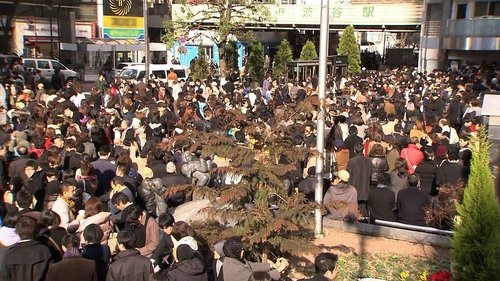 N/A/100 votes
N/A/100 votesHuman Stampede
Season 1 Episode 17 - Aired 5/21/2022
What is a human stampede? It is a disaster in which people are so crowded together that they push and squeeze against each other, making it hard to breathe. It can also cause a person to fall, triggering a domino effect that results in casualties. In the past, human stampedes have taken the lives of countless people. In Japan, there is a high risk of a mega-quake hitting directly beneath the Tokyo metropolitan area in the near future. If this occurs, up to 8 million people are expected to be stranded in the city, creating a high possibility of human stampedes. What can we do to prevent casualties? Find out about the latest research on crowd safety.
Director: Takeshi Kawamoto
Writer: Unknown
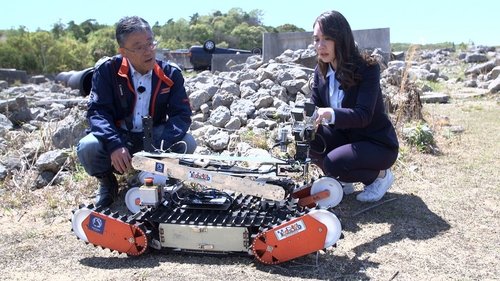 N/A/100 votes
N/A/100 votesDisaster Response Robots
Season 1 Episode 18 - Aired 6/4/2022
The Great East Japan Earthquake in 2011 and its resulting tsunami caused the accident at the Fukushima Daiichi Nuclear Power Plant. The worst nuclear accident in Japan's history suffered from a lack of information due to the inaccessibility of the reactor buildings. For this reason, "disaster response robots" were deployed to take pictures and measure radiation doses inside the buildings. In the aftermath of a major disaster like that as well as an earthquake or fire, robots can quickly enter dangerous sites that are inaccessible to humans, find people in need of rescue, and take detailed measurements to provide data about the site. In this episode, we'll look at the latest developments among Japan's "disaster response robots."
Director: Kenichi Tsusaka
Writer: Unknown
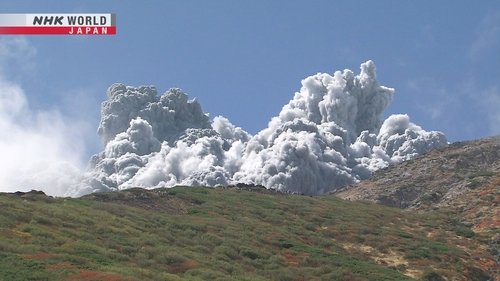 N/A/100 votes
N/A/100 votesPhreatic Eruptions
Season 1 Episode 19 - Aired 8/6/2022
Mt. Ontake is located on the border of Nagano and Gifu prefectures. Standing 3,067 meters above sea level, it is a popular daytrip hiking spot for mountain enthusiasts. Mt. Ontake was crowded with climbers around noon during a September vacation season, when the sudden stream-driven "phreatic eruption" occurred. Many climbers panicked as they encountered this unexpected natural phenomenon. Why couldn't this eruption be predicted? According to experts, there are 3 main types of volcanic eruptions, and the warning signs of phreatic eruptions are the hardest to detect. Now researchers are making advances to detect the slightest signs of an eruption using observation satellites and chemical approaches. Find out the latest on the research of volcanic predictions.
Director: Ryoji Yoshimoto
Writer: Unknown
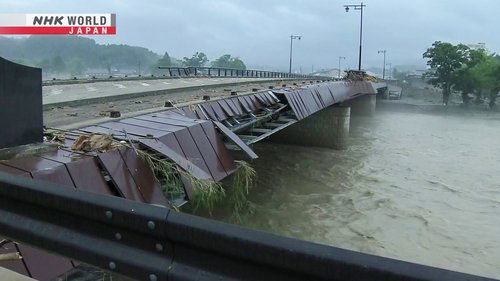 N/A/100 votes
N/A/100 votesLinear Rainbands
Season 1 Episode 20 - Aired 8/13/2022
Linear rainbands. Once they occur, the area is hit with heavy downpour for an extended period of time, resulting in flood damage. In Japan, this phenomenon has been drawing attention ever since it struck in 2014, bringing torrential rainfall to Hiroshima Prefecture. While various studies led by the Japan Meteorological Agency are underway, it is still difficult to make accurate forecasts of linear rainbands at this point. When and where do linear rainbands occur? The mechanisms are still not understood. Find out how researchers are taking on the challenge to predict linear rainbands by accurately observing the location and the amount of water vapor in the atmosphere and performing rapid calculations.
Director: Junya Fukui
Writer: Unknown
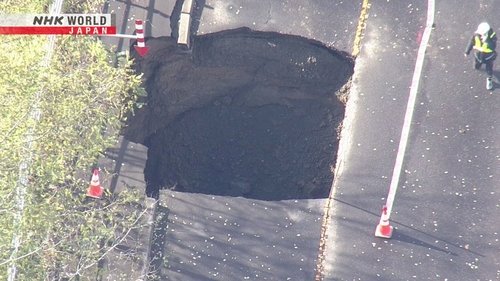 N/A/100 votes
N/A/100 votesRoad Cave-ins
Season 1 Episode 21 - Aired 10/1/2022
In November 2021, the surface of a road in Mikasa, Hokkaido Prefecture suddenly caved in. A car fell into the large hole that formed, seriously injuring its three passengers. No underground construction work had been going on in the surrounding area, and the accident occurred without warning. Road cave-ins and other types of sinkholes happen not only in Japan but also in cities all over the world. One of the major causes is deterioration from aging pipes underground. Experts warn that multiple factors combine to cause sinkholes. In this program, we'll look at how sinkholes form as well as their countermeasures using the latest technology.
Director: Kenichi Tsusaka
Writer: Unknown
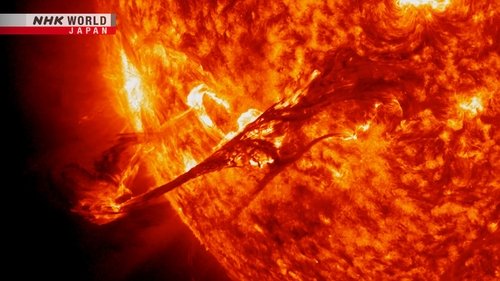 N/A/100 votes
N/A/100 votesSolar Flares
Season 1 Episode 22 - Aired 10/22/2022
In February 2022, an American space exploration company simultaneously launched 49 satellites. Yet not long after, 40 of those satellites fell out of orbit and burned up upon re-entry into the Earth's atmosphere. Similar accidents have occurred frequently in the past. The cause of such incidents is believed to be solar flares, huge explosions that occur on the sun's surface. Solar flares can also lead to other disasters that threaten our daily lives, such as major power outages, radio interference, and communication problems for airplanes and ships. Why do solar flares occur? We'll visit some researchers in Japan that are working hard to understand their mechanism and predict future occurrences.
Director: Kiichiro Kimura
Writer: Unknown
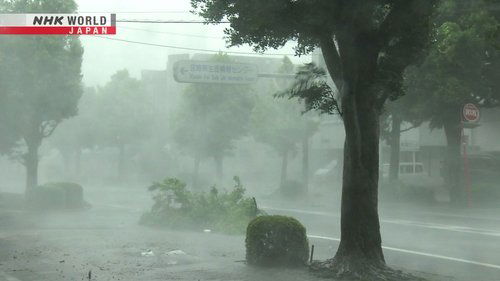 N/A/100 votes
N/A/100 votesTyphoon Forecasting
Season 1 Episode 23 - Aired 12/3/2022
More than 10 typhoons hit the Japanese archipelago in an average year. Their strong winds and heavy rains can cause flooding and landslides, even toppling buildings. To minimize such damage, Japan is working to further improve its predictions and monitoring of typhoon activity. But, accurately predicting a typhoon's changing strength is particularly challenging. To address this, researchers now fly a plane into the eye of a typhoon to measure the actual atmospheric conditions directly on-site. In this episode, we learn more about flying into these fierce typhoons.
Director: Takeshi Kawamoto
Writer: Unknown
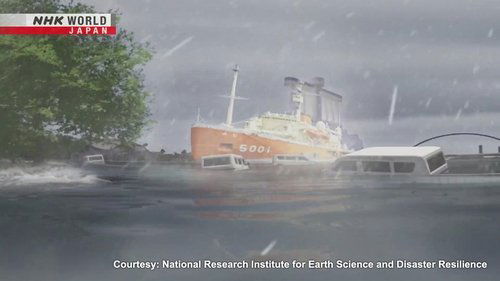 N/A/100 votes
N/A/100 votesStorm Surges
Season 1 Episode 24 - Aired 12/24/2022
When a typhoon or similar storm approaches, air pressure drops and the sea surface is sucked up. Strong winds also push seawater towards the shore. These factors combine to create a storm surge, a rise in the sea level that often results in coastal flooding. As an island nation, Japan is particularly vulnerable to storm surges. What will happen to the power of storm surges as climate change progresses? According to the latest research, the damage caused by storm surges is expected to become more severe, while the frequency of "once-in-50-year" storm surges may increase. We'll introduce some of latest measures to cope with this prospect.
Director: Junya Fukui
Writer: Unknown
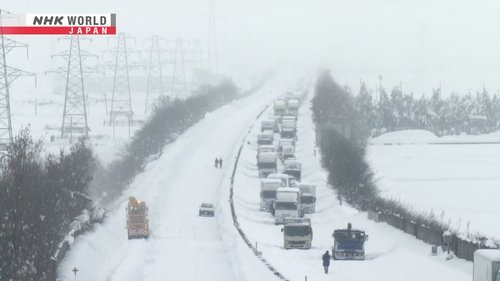 N/A/100 votes
N/A/100 votesHeavy Snow
Season 1 Episode 25 - Aired 2/11/2023
In recent years, heavy snow has been falling frequently in Japan. While the overall amount of snowfall per winter has been decreasing year by year, the amount of snow that falls at one time is conversely increasing. What role does climate change play in this? It turns out that rising temperatures have led to more water vapor in the Sea of Japan, and interaction with a weather phenomenon called JPCZ has subsequently brought on heavy snow. We'll examine the mechanism behind this as well as the risks of snow disasters.
Director: Ryoji Yoshimoto
Writer: Unknown
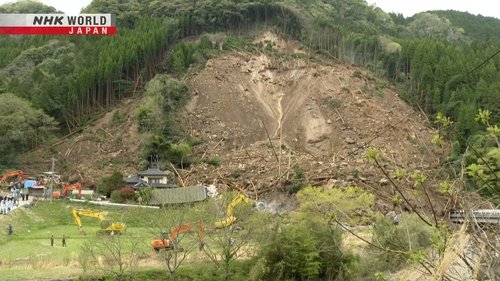 N/A/100 votes
N/A/100 votesLandslides
Season 1 Episode 26 - Aired 2/18/2023
In April 2018, a landslide occurred on a hill behind houses in Nakatsu City, Oita Prefecture. The landslide moved sediment over a width of more than 100 meters, completely destroying four houses and killing six people. Landslide hazard areas are found throughout Japan, and the total number of landslide hazard areas is approximately 680,000. Why do landslides occur? Experts believe they are often triggered by heavy rainfall. In this episode, we'll look at the mechanism behind landslides and the latest research on reducing their damage.
Director: Kenichi Tsusaka
Writer: Unknown
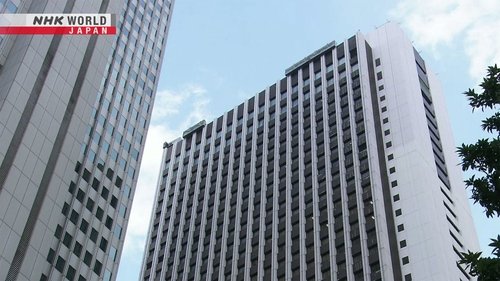 N/A/100 votes
N/A/100 votesQuake-resistant Skyscrapers
Season 1 Episode 27 - Aired 3/11/2023
On March 11, 2011, a huge earthquake occurred off Japan's Tohoku coast. Skyscrapers 400 kilometers away in Tokyo's Shinjuku district continued swaying for 13 minutes. And 770 kilometers away in Osaka, tall buildings swayed for more than 10 minutes. This swaying was caused by "long-period seismic waves", which can travel long distances at frequencies that resonate with high-rise buildings in particular. In this episode, we'll look at some of the steps being taken to address this problem, including heavy weights installed atop high-rises.
Director: Akihito Sawai
Writer: Unknown
 N/A/100 votes
N/A/100 votesTsunami Observation
Season 1 Episode 28 - Aired 3/18/2023
One of the most important things to do to save lives from a major tsunami is to evacuate to safety as soon as possible. The key to this is fast and accurate tsunami information. Once a life-threatening tsunami is detected, people living in risk areas have to evacuate to a place where they can escape from tsunami damage. After the 2011 Great East Japan Earthquake, Japan has established a large-scale tsunami observation network on the ocean floor and is working to disseminate accurate and prompt tsunami information.
Director: Junya Fukui
Writer: Unknown
 N/A/100 votes
N/A/100 votesRiver Flooding
Season 1 Episode 29 - Aired 3/25/2023
River flooding happens when heavy rain causes river levels to rise and overflow with large amounts of water. In recent years in Japan, a weather phenomenon known as "linear rainbands" has led to frequent torrential rain and the flooding of rivers. River flooding comes in two forms, and when one accompanies the other, the damage also grows more intense. Knowing the risks in the areas we call home and swiftly fleeing to a safe evacuation site in times of emergency are what is most needed to save lives. We will introduce tools with the latest digital technology that are effective for this purpose.
Director: Junya Fukui
Writer: Unknown
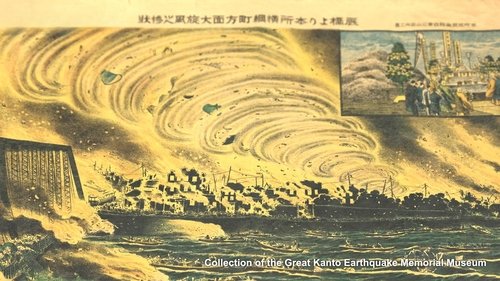 N/A/100 votes
N/A/100 votesFire Tornadoes
Season 1 Episode 30 - Aired 6/24/2023
The Great Kanto Earthquake of 1923 was one of the worst disasters in Japanese history. A magnitude 7.9 earthquake centered in the western part of Kanagawa Prefecture caused buildings to collapse, landslides to occur, and a tsunami to hit the coastal areas. However, most of the victims did not die in these disasters; the main cause of death was fire. In one open space in Tokyo, almost all of the nearly 40,000 evacuees who had gathered there died in a fire. Yet this was not just any fire, but rather a fire whirl, or what is more commonly known as a "fire tornado."
Director: Kenichi Tsusaka
Writer: Unknown
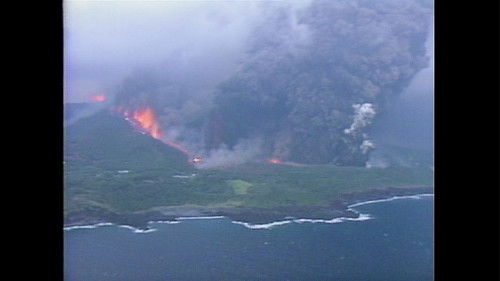 N/A/100 votes
N/A/100 votesLava Flows
Season 1 Episode 31 - Aired 7/29/2023
The 1983 eruption of Tokyo's Miyake Island resulted in the burial or loss of approximately 400 houses as well as a school built of reinforced concrete that was also buried by lava flow. The hazard map for Mount Fuji was revised in 2021, revealing the possibility of far greater damage from lava flows. Why have the damage assumptions been increased? And what countermeasures should be taken? In this episode, we'll look at the latest research on lava flows from Mount Fuji.
Director: Shota Otsu
Writer: Unknown
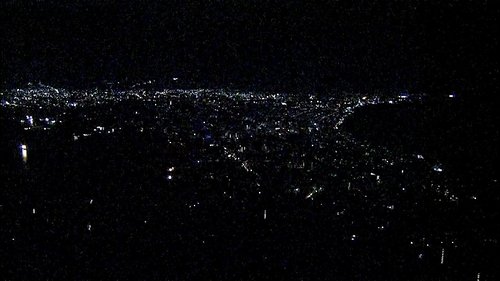 N/A/100 votes
N/A/100 votesLarge-Scale Blackouts
Season 1 Episode 32 - Aired 8/26/2023
In September 2018, the Hokkaido Eastern Iburi Earthquake knocked out power of the entire region, affecting up to 2.95 million households. The tremor caused several power plants to shut down, disrupting the electrical frequency. This led to a chain reaction of other power plants to shut down. People's lives were greatly affected, as medical equipment failed and logistics systems were disrupted. What can we do to prevent such large-scale power outages? Find out what power companies and local communities are doing to take steps against massive blackouts.
Director: Kenichi Tsusaka
Writer: Unknown
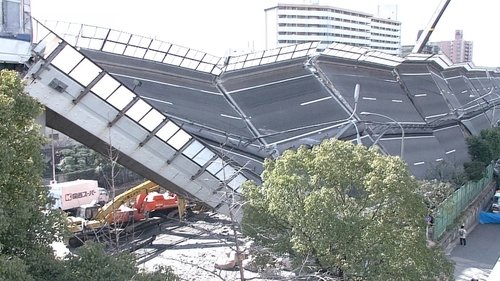 N/A/100 votes
N/A/100 votesActive Faults
Season 1 Episode 33 - Aired 9/30/2023
Earthquakes destroy many buildings and take lives. One cause of earthquakes is an active fault. The impact of a sudden displacement of the ground shakes the Earth and causes an earthquake. Japan has compiled a database of active faults found to date and is preparing for earthquakes by examining each one in detail to predict its magnitude. Surveys are also being conducted to find new active faults. In this episode, we'll see how one researcher is searching for active faults hidden in the seafloor by using ultrasonic waves sent out from a ship.
Director: Misato Ohtani
Writer: Unknown
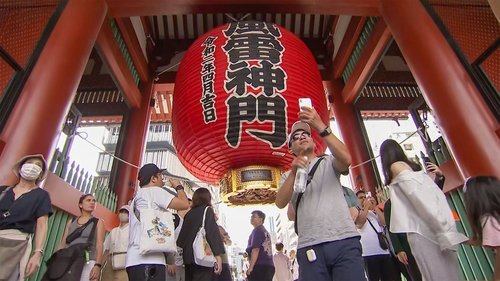 N/A/100 votes
N/A/100 votesEnsuring a Safe Journey in Japan
Season 1 Episode 34 - Aired 10/28/2023
The number of foreign visitors to Japan has been on the rise since the COVID travel restrictions have been lifted. However, many are not fully aware of natural disasters that strike Japan such as earthquakes, tsunamis, and typhoons. Now, there are efforts to ensure the safety of visitors during disasters. The newly developed "announcer drone" translates text into 29 languages and instructs people to evacuate while flying. At evacuation centers, local governments are well prepared to notify important information to those who do not understand Japanese, using translation systems developed for emergency situations.
Director: Shota Otsu
Writer: Unknown
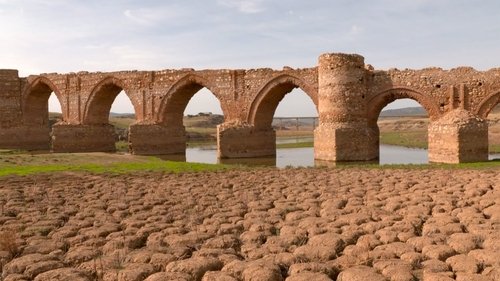 N/A/100 votes
N/A/100 votesDroughts
Season 1 Episode 35 - Aired 11/18/2023
Droughts are increasing due to global warming. The latest simulations predict that megadroughts could occur along the Mediterranean coast and the west coast of the US. Now, Japan's cutting-edge technology is attracting attention as a solution to water scarcity. In Saudi Arabia, there are high hopes for using a filter developed by Shinshu University that removes over 99% of salt content from seawater. Meanwhile, Egypt is looking into a water dispenser developed by a Japanese venture company which produces drinking water from air.
Director: Junya Fukui
Writer: Unknown
 N/A/100 votes
N/A/100 votesWildfires
Season 1 Episode 36 - Aired 12/23/2023
Wildfires are increasing worldwide and global warming is accelerating the risk. Find out about Japan's unique system for swiftly responding to fires and the latest research on forest fire mitigation.
Director: Junko Fujihashi
Writer: Unknown
 N/A/100 votes
N/A/100 votesTokyo Metropolis
Season 1 Episode 37 - Aired 1/13/2024
Tokyo is prone to natural disasters such as earthquakes and flooding. Discover the most advanced disaster prevention technologies hidden throughout the city.
Director: Misato Ohtani
Writer: Unknown
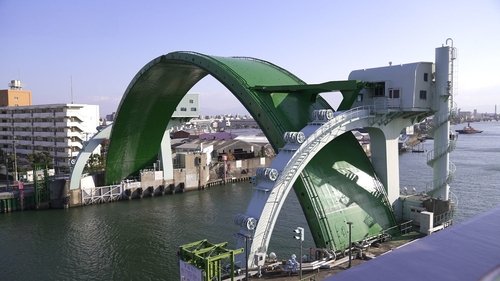 N/A/100 votes
N/A/100 votesOsaka Metropolis
Season 1 Episode 38 - Aired 1/20/2024
Osaka, a city that thrives on rivers, has faced countless flood damage. Find out the latest measures protecting the city from typhoons and heavy rain.
Director: Kenichi Tsusaka
Writer: Unknown
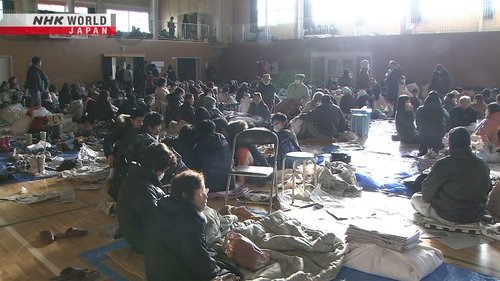 N/A/100 votes
N/A/100 votesEmergency Food
Season 1 Episode 39 - Aired 3/2/2024
Find out about Japan's emergency food options that meet the needs of various people. Also discover the rolling stock method, a smart way to stockpile emergency food.
Director: Tamiko Wakisaka
Writer: Unknown
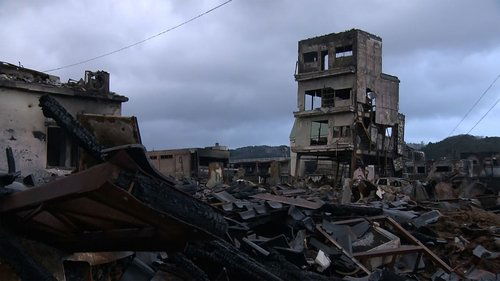 N/A/100 votes
N/A/100 votesTsunami Evacuation
Season 1 Episode 40 - Aired 3/16/2024
In this episode, we look at Japan's efforts to improve tsunami evacuation, from overcoming "normalcy bias" that causes people to underestimate risk, to the installation of coastal evacuation towers.
Director: Shota Otsu
Writer: Unknown
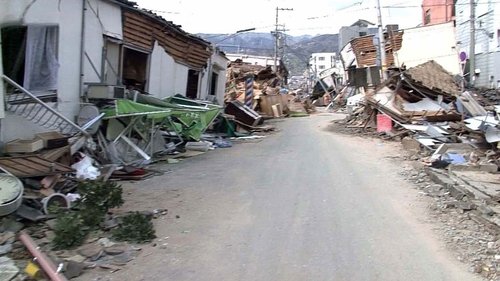 N/A/100 votes
N/A/100 votesHow to Survive an Earthquake
Season 1 Episode 41 - Aired 4/20/2024
Be earthquake-ready! Learn survival tips for quakes and when you're trapped under rubble. You'll want to watch this before your next trip to Japan.
Director: Junya Fukui
Writer: Unknown
 N/A/100 votes
N/A/100 votesHow to Survive a Flood
Season 1 Episode 42 - Aired 5/18/2024
What does it take to survive a flood? Japan has developed survival skills for floods through experiences such as typhoons. Find out how to safely navigate flooded streets and escape sinking cars.
Director: Junya Fukui
Writer: Unknown
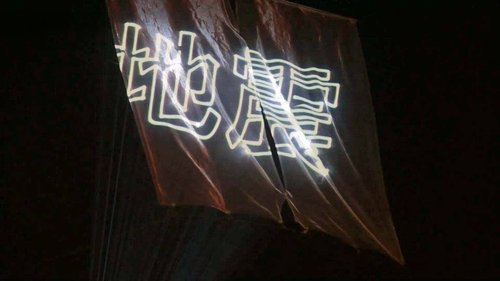 N/A/100 votes
N/A/100 votesDrone Disaster Management
Season 1 Episode 43 - Aired 6/8/2024
Drones are proving particularly useful in the area of disaster response. Now, Osaka University is developing the world's first system to project evacuation information in the air.
Director: Kenichi Tsusaka
Writer: Unknown
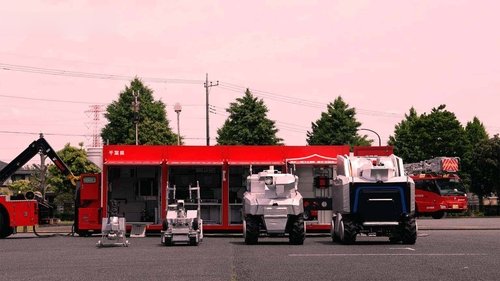 N/A/100 votes
N/A/100 votesSend in the Robot Fire Brigade!
Season 1 Episode 44 - Aired 7/13/2024
The world's first robot fire brigade has been developed in Japan. See how these incredible robots equipped with AI can tackle large-scale fires in areas that are inaccessible to humans.
Director: Misato Ohtani
Writer: Unknown
 N/A/100 votes
N/A/100 votesScientists on a Quest to Control Typhoons
Season 1 Episode 47 - Aired 11/2/2024
Typhoons are expected to intensify in the future, but can they be controlled? Find out about a national project that explores ways to weaken winds using fleets of ships and artificial clouds.
Director: Unknown
Writer: Unknown
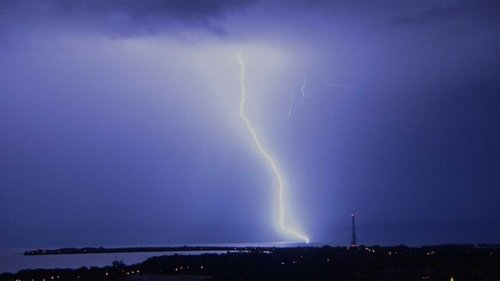 N/A/100 votes
N/A/100 votesUncovering the Mysteries of Winter Lightning
Season 1 Episode 48 - Aired 12/28/2024
In Japan, extremely powerful lightning known as a superbolt can occur in the Hokuriku region during winter. What is the source of this power, which is comparable to a small nuclear explosion?
Director: Unknown
Writer: Unknown
 N/A/100 votes
N/A/100 votesPhase Free - Disaster Preparedness in Everyday Life
Season 1 Episode 49 - Aired 1/25/2025
Phase Free is a disaster preparedness concept that does not distinguish between everyday life and emergency situations. We'll see how everyday items can be used in times of disaster as well.
Director: Unknown
Writer: Unknown
 N/A/100 votes
N/A/100 votesFor Safe Travel Through Snowy Regions
Season 1 Episode 50 - Aired 2/22/2025
Japan's snow is a big draw for tourists, but snow and ice can also pose dangers to drivers. We'll look at some Japanese technology being developed to prevent whiteouts and accidents on slippery roads.
Director: Unknown
Writer: Unknown
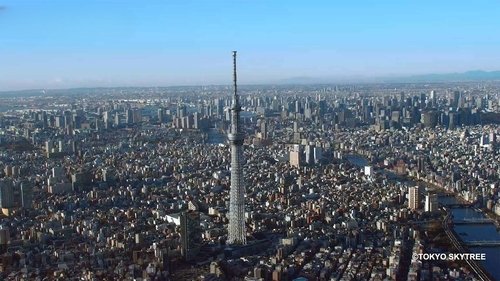 N/A/100 votes
N/A/100 votesHow Tokyo Skytree Deals with Disaster
Season 1 Episode 54 - Aired 6/21/2025
Tokyo Skytree, one of Japan's most famous tourist attractions, is equipped with a variety of countermeasures against disasters. We'll go behind the scenes to explore the tower's advanced technologies.
Director: Unknown
Writer: Unknown
